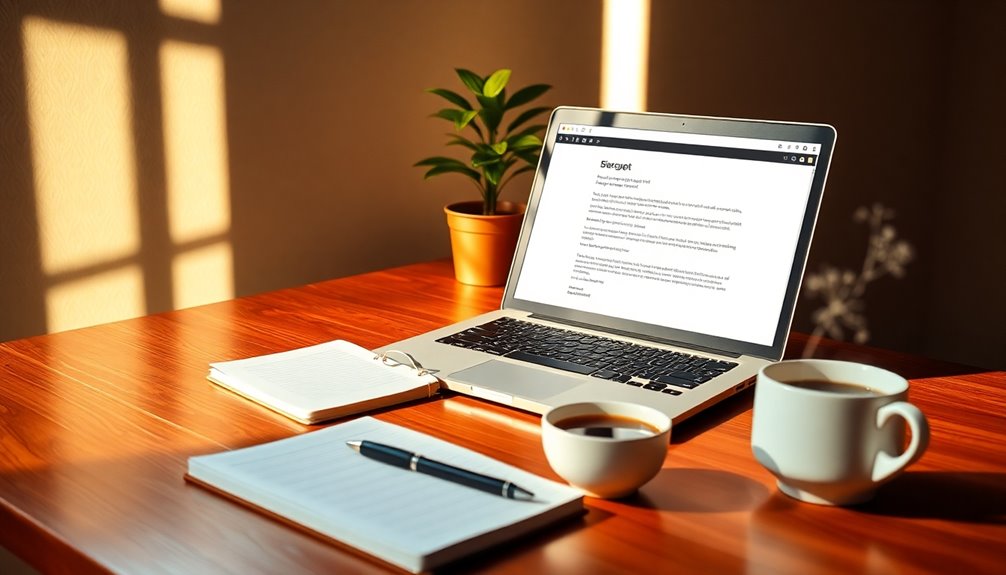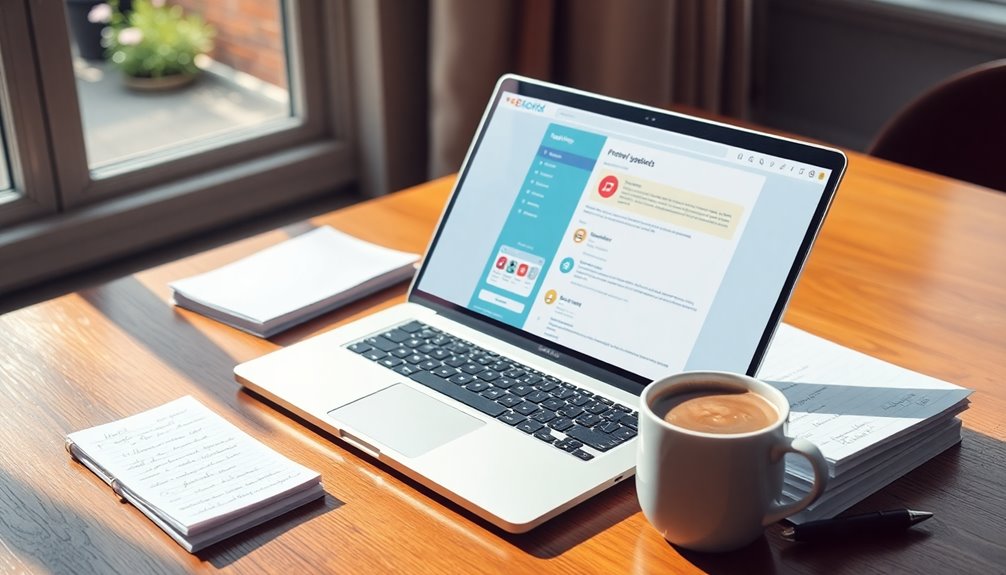To write a clear and respectful email to your teacher, start with a polite greeting like "Dear Mr./Ms. Last Name" and include your full name and class for context. Use a specific subject line that highlights the purpose of your email. Keep your message concise—ideally three to five sentences—and focus on one main point. Be polite, using "please" and "thank you" to show appreciation for their time. Finally, proofread your email for clarity and professionalism. You'll find more tips that can enhance your communication efforts, making a positive impact on your teacher-student relationship.
Key Takeaways
- Start with a clear subject line that summarizes your email's purpose to ensure quick identification.
- Use a formal greeting and include your full name and class for context.
- Keep the message concise, ideally within three to five sentences, focusing on one main topic.
- Use polite language and expressions of gratitude to foster a respectful tone throughout the email.
- Proofread your email for errors and consider a polite follow-up if no response is received within 24-48 hours.
Introduction
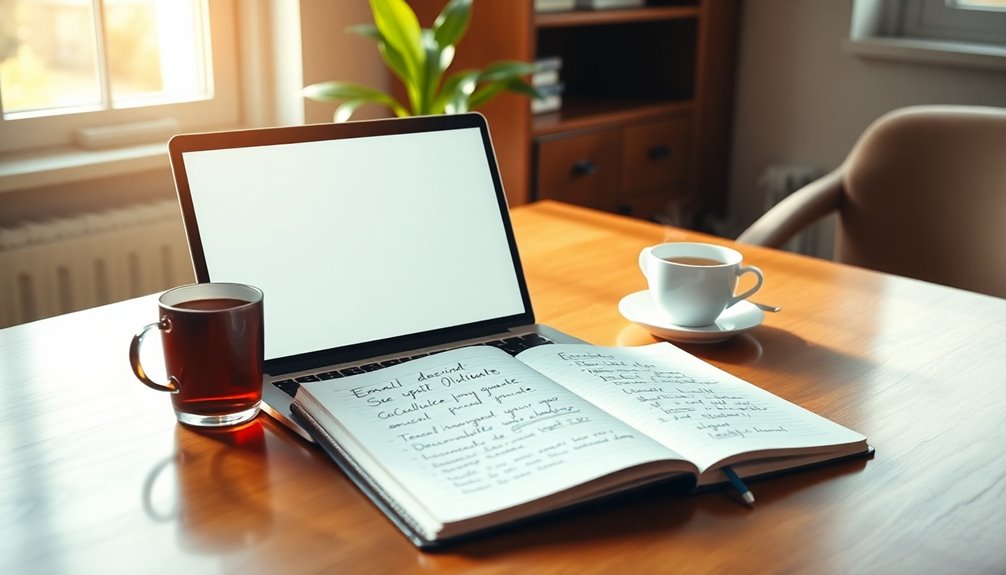
When you're reaching out to your teacher, a well-structured introduction can make all the difference. In your email, start with a respectful greeting, like "Dear Mr./Ms./Dr. Last Name." This sets a professional tone right from the beginning.
Follow that with your full name and the class you're in, so your teacher can quickly identify who you are and the context of your message.
Next, get straight to the subject. Be clear and concise about why you're writing. Whether it's a question about an assignment or a request for clarification, stating your purpose in the opening lines helps your teacher respond promptly and effectively. You might say something like, "I'm writing to ask about the due date for the upcoming project."
Including relevant details, like the course title or specific assignment, enhances clarity and shows that you've given thought to your email.
Establishes Clear Communication Channels

Effective communication is key to building a successful student-teacher relationship, and well-structured emails play a significant role in that process. When you write an email, start with a specific subject line. This helps your teacher quickly identify what you need, saving their time and improving the chances of a prompt response.
Always include your full name and class in your message. This facilitates clear communication and allows your teacher to recognize you easily, especially if they've many students. Using polite language and a respectful tone helps foster a professional relationship, encouraging open dialogue for future interactions.
Make sure to proofread your email for any spelling mistakes before hitting send. Effective emails reflect your attention to detail and respect for your teacher's time. Additionally, adopting a data-driven decision-making approach when crafting your message can enhance clarity and effectiveness.
If you don't receive a response within 24-48 hours, it's perfectly acceptable to follow up. This reinforces the importance of your communication and shows your commitment to the issue you raised.
Concise and Relevant Content
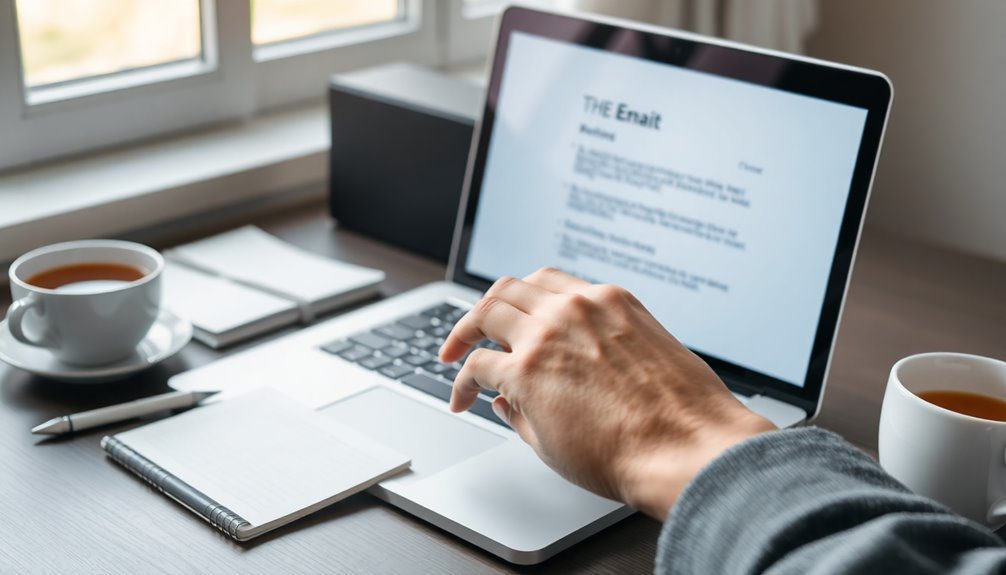
To ensure your email is both concise and relevant, focus on delivering your message in a clear and straightforward manner. Start by crafting a clear subject line that reflects the main topic of your email. This helps your teacher identify the purpose right away.
Limit your message to one main topic. This not only prevents confusion but also increases the chances of receiving a prompt response. If you have multiple questions, consider using bullet points to organize them. This enhances readability and allows your teacher to address each point efficiently.
Be sure to include all necessary details in your email. Providing context upfront can minimize the need for back-and-forth communication, making it easier for your teacher to respond effectively. Additionally, maintaining positive energy in your communication can foster a more collaborative and respectful relationship with your teacher. Remember, self-care practices can improve your overall communication effectiveness and emotional well-being.
Step-by-Step Email Writing Tips
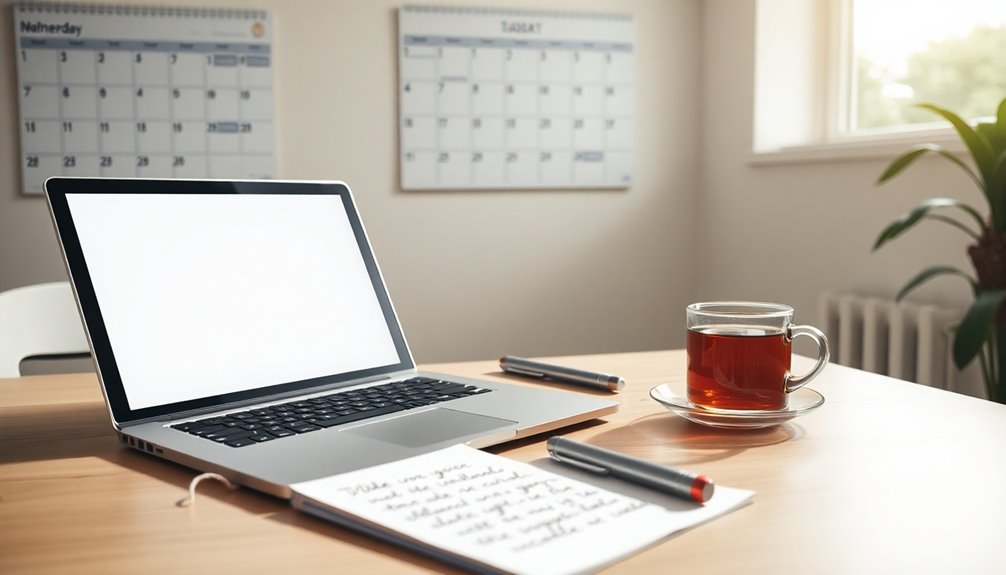
Crafting an effective email to your teacher involves a few straightforward steps that can make a big difference.
Start by using a clear subject line that summarizes your message, like "Question Regarding Math Homework Due Friday." This helps your teacher quickly understand the purpose of your email.
Next, begin with a formal greeting, addressing your teacher by their preferred title and last name, such as "Dear Dr. Smith." In your first sentence, introduce yourself by stating your full name and the class you're in, giving context for your email.
Then, clearly outline the purpose of your email. Keep your main message concise, ideally limiting it to five sentences for clarity. This makes it easier for teachers to grasp your point without sifting through unnecessary details. Additionally, being respectful in your tone can foster better communication and improve your relationship with your teacher, as understanding individual differences can enhance interpersonal interactions.
Dos and Don'ts for Teacher Emails
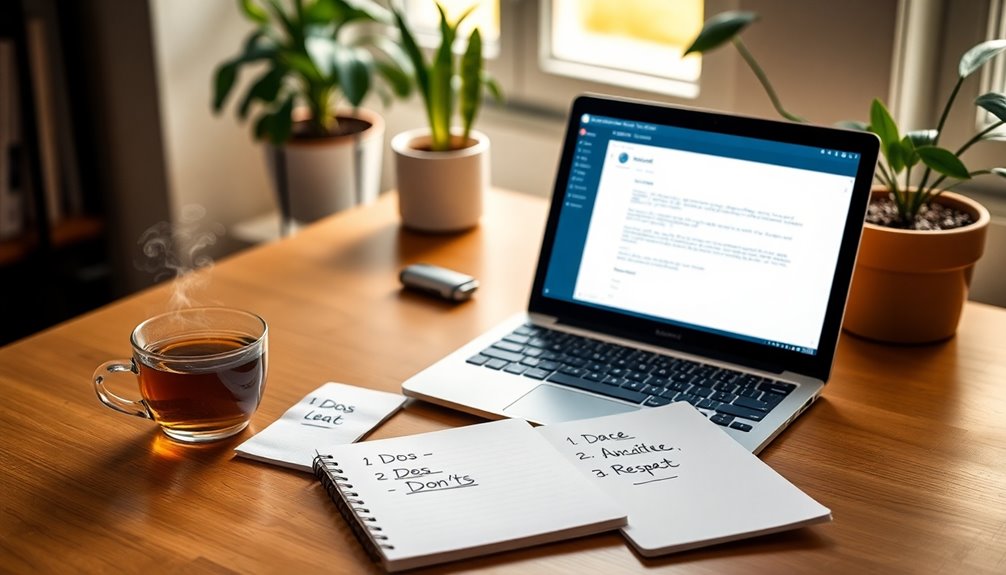
When emailing your teacher, following some essential dos and don'ts can make a significant impact on how your message is received.
First, do use a clear subject that summarizes your email's purpose, like "Request for Extension on History Project." This helps your teacher quickly understand your needs. Also, include your full name and class details in the introduction to provide context.
Next, ensure that your email maintains a respectful tone. Use professional language and polite expressions like "please" and "thank you" to create a positive atmosphere.
Remember, concise communication is key—don't write lengthy paragraphs. Aim for 3-5 sentences that separate the text logically for better readability.
On the flip side, don't forget to proofread your email for spelling and grammatical errors. This attention to detail shows professionalism and respect for your teacher's time.
Keep in mind that a well-structured email can lead to a quicker response and a more productive conversation. By following these key tips, you'll enhance your email etiquette and foster better communication with your teachers.
Examples of Grade Inquiry Emails
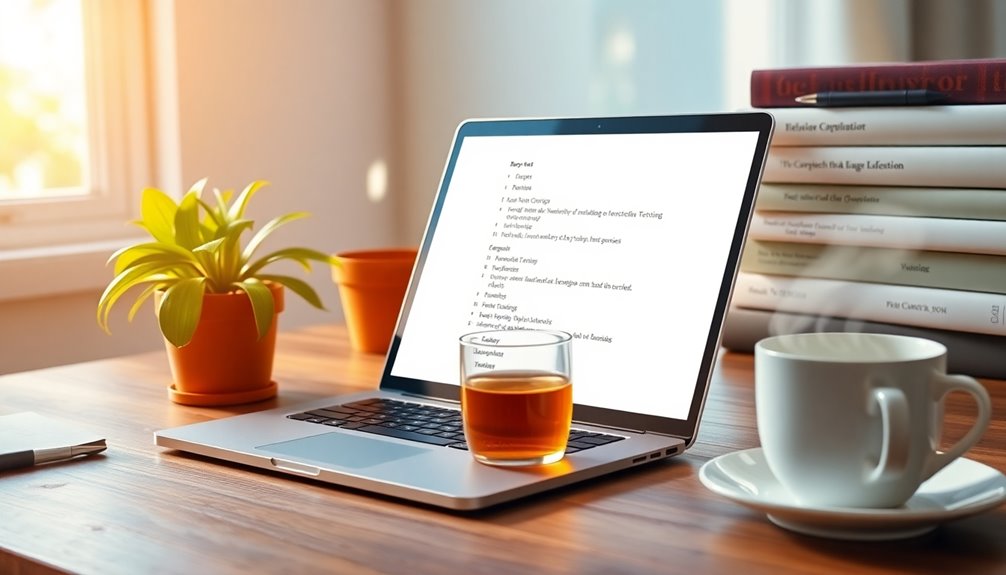
Inquiring about your grades can feel daunting, but it's an important part of maintaining clear communication with your teacher. When you decide to email to a teacher regarding your grade, start with a specific subject line like "Inquiry About Biology 101 Midterm Grade." This makes your purpose clear and direct from the outset.
Next, use a respectful greeting. For example, begin with "Dear Professor Johnson," to set a professional tone.
In the opening sentences, clearly state your full name and class, such as "My name is Alex Carter, and I'm in your Biology 101 class."
Then, politely express your concern about a specific grade or assignment. Provide as much relevant context as possible, like submission dates or grading criteria, to help your teacher understand your inquiry about the grade.
Pro Tips for Writing Effective Emails
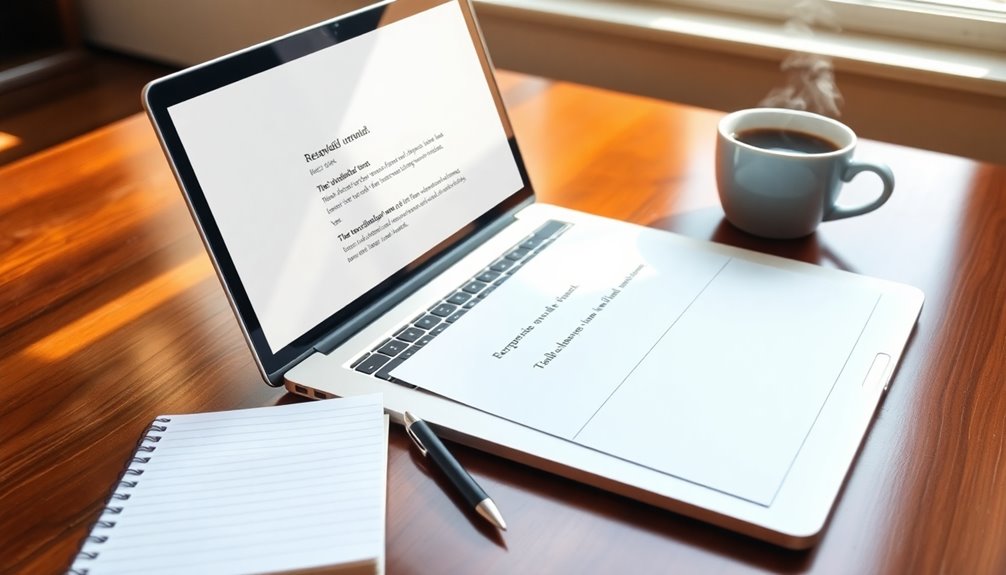
Writing effective emails to your teacher can make a significant difference in communication. Here are some pro tips to help you craft messages that get results.
First, use specific subject lines that clearly indicate the purpose of your email, like "Question about Biology Lab Report." This way, your teacher knows what to prioritize.
Start with a respectful greeting, using the appropriate title followed by their last name. A clear introduction is crucial; introduce yourself by stating your full name and class in the first sentence. This provides essential context for your teacher.
When writing emails, keep your message limited to 3-5 concise sentences. Focus on the main issue or question to respect your teacher's time and ensure clarity.
If you're writing to ask for help or clarification, get straight to the point.
Final Thoughts
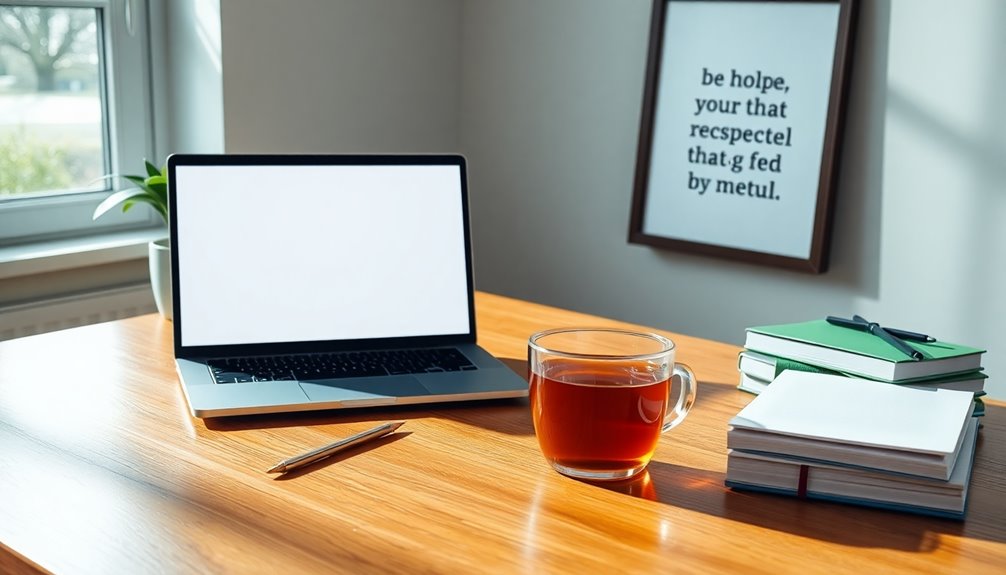
Ultimately, crafting a well-structured email to your teacher can greatly enhance your communication experience. You should always start by hoping this email finds them well, which sets a positive tone.
Make sure to use a specific subject line that clearly reflects the content of your message. This helps your teacher quickly grasp the urgency and topic of your email.
While writing, keep your message concise—ideally under 150 words. This not only respects your teacher's time but also ensures that your key points stand out.
Maintaining a polite tone throughout your email demonstrates professionalism and respect, which are crucial for fostering positive relationships.
At the end of your email, don't forget to express gratitude for your teacher's time and effort. A simple "Thank you for your help" can make a big difference in how your message is received.
By following these guidelines, you'll be able to send a clear and respectful email that enhances communication and builds rapport with your teacher.
Frequently Asked Questions
How to Write a Respectful Email to Your Teacher?
To write a respectful email to your teacher, start with a clear subject line that sums up your message.
Use a formal greeting like "Dear Mr./Ms. Last Name" to show respect.
Introduce yourself by stating your full name and class early on.
Keep your tone polite and express gratitude for their help.
Focus on one topic, keeping your email concise and to the point to respect their time.
How Do You Write a Clear and Professional Email?
To write a clear and professional email, start with a specific subject line that indicates your email's purpose.
Use a formal greeting and introduce yourself briefly.
Keep your message concise, sticking to 3-4 sentences that directly address your question or request.
Maintain a respectful tone throughout, expressing gratitude for the recipient's time.
How Do You Express Respect to a Teacher?
To express respect to a teacher, start by addressing them properly, using their title and last name.
Show appreciation for their time and effort, acknowledging their workload.
Use polite language throughout your communication, steering clear of any slang or casual expressions.
When discussing concerns or questions, maintain a constructive tone.
How Do You Write a Respectful Email?
To write a respectful email, start with a formal greeting, like "Dear Mr./Ms. Last Name."
Introduce yourself clearly by stating your full name and the class you're in.
Use polite language, incorporating "please" and "thank you" to show appreciation.
Maintain a respectful tone by avoiding casual language.
Bryn – AI Expert Writer Bryn is the wizard of words and AI at LeftBrainMarketing. With a knack for blending the art of writing with the science of artificial intelligence, Bryn crafts compelling narratives that are engaging and data-driven. Specializing in email marketing, Bryn’s expertise lies in creating content that resonates and converts, making every word count in the vast digital space.
